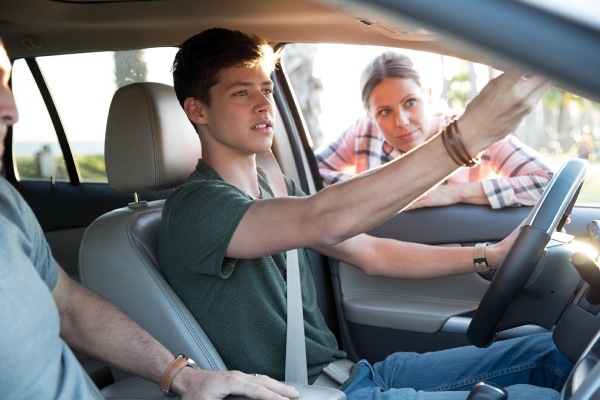|

Fearless teens may say they’re ready for freeway driving, but are they really? As their parent, are you ready?
After all, you will be their supervising driver as they venture out onto the superhighways and freeways. Here are some tips f on what parents should look for in assessing their teens’ readiness for freeway driving, and some tips on how to drive on the highway for the first time.
Key points for parents teaching their teens to drive safely.
If the prospect of your teen getting a learner’s permit makes you apprehensive, then the concept of allowing them to drive on a busy highway is likely to cause a full-blown anxiety attack. It’s common for parents to allow their new driver to navigate local roads only, until they gain enough real-world experience to venture onto highways. Obviously, the risks are great. But full parental involvement in the process can help your child make a smooth and safe transition from local roads to the interstate.
For starters, parents must approach the highway training of their child like any educational experience.
“With driving, every child learns differently, just as they do with their school subjects,” says Maria A. Wojtczak, who owns and operates DrivingMBA, a driver’s-ed business in Arizona. “There is a progression of skills and an attitude that must be developed to instill a sense of responsibility. When is a student ready for the highway? Because getting onto a freeway is a lane change at a high rate of speed, they should demonstrate that they can change lanes on slower-paced roads first. But when they know how to make a solid lane change on these streets, they’re ready to tackle a highway.”
Here are some pivotal points for parents to address in order to help their teens appreciate the critical aspects of highway driving:
Lane changes
Establishing proper speed and distance remains key to managing a lane change on an interstate. Parents should teach their teens to leave four to six seconds-worth of space between their car and the vehicle in front of them as they maneuver. They should routinely check the rearview and side-view mirror and blind spot before switching over. “The more space they have, the better their potential to avoid a collision,” says Wojtczak, who is also a board member of the Red Means Stop Traffic Safety Alliance. “A four-to-six-second cushion significantly increases their ability to react to changing circumstances such as weather, debris and other factors.”
There are three signs that demonstrate a teenager has mastered the skill of making a safe lane change:
- Using a turn signal
- Keeping the speed constant while simultaneously looking over the shoulder and checking rear-view and side-view mirrors for approaching cars
- Moving the steering wheel only slightly to merge into the next lane
Stay to the right
During the initial phases, always direct your child to drive in the right lane. They really have no business heading into the left lane, which is intended for passing. “Staying in the right lane will help them interact with traffic coming onto the freeway, and they’ll maintain their speed easier there,” Wojtczak says.
Signaling intentions
Young drivers must get in the habit of using their blinkers constantly, even if they believe their intentions are obvious. “Blinkers are the only way we have to communicate with other drivers,” says Chris Duquin, owner of Stevens Driving School, which has several locations in the state of New York. “It’s amazing how often drivers cause problems by not using them on highways.”
Full perspective
Newer drivers tend to stare at what’s right in front of them. But highway speeds and unpredictability demand a wider viewpoint. “They need to look closely in front of their vehicle, but also farther down the road and into the rear-view,” Duquin says. “Good drivers continuously adjust their observation points.”
The right frame of mind
The education process is about more than proper driving—it’s about making sure your teen’s maturity level is up to the task. “They must understand never to take anything personally, especially on a highway,” says Michael Soubirous, a retired California Highway Patrol lieutenant who now writes a local newspaper column in Riverside, Calif., called “On the Road.” “If someone cuts you off, let it go. You never know the mental state of the other party and maybe they simply made a mistake. Drivers are not perfect, after all.”
Original Post by Nationwide Insurance: https://blog.nationwide.com/highway-driving-tips-teens/
Posted Friday, January 19 2018 10:04 AM
Tags : Auto Insurance, Tips and Tricks
|